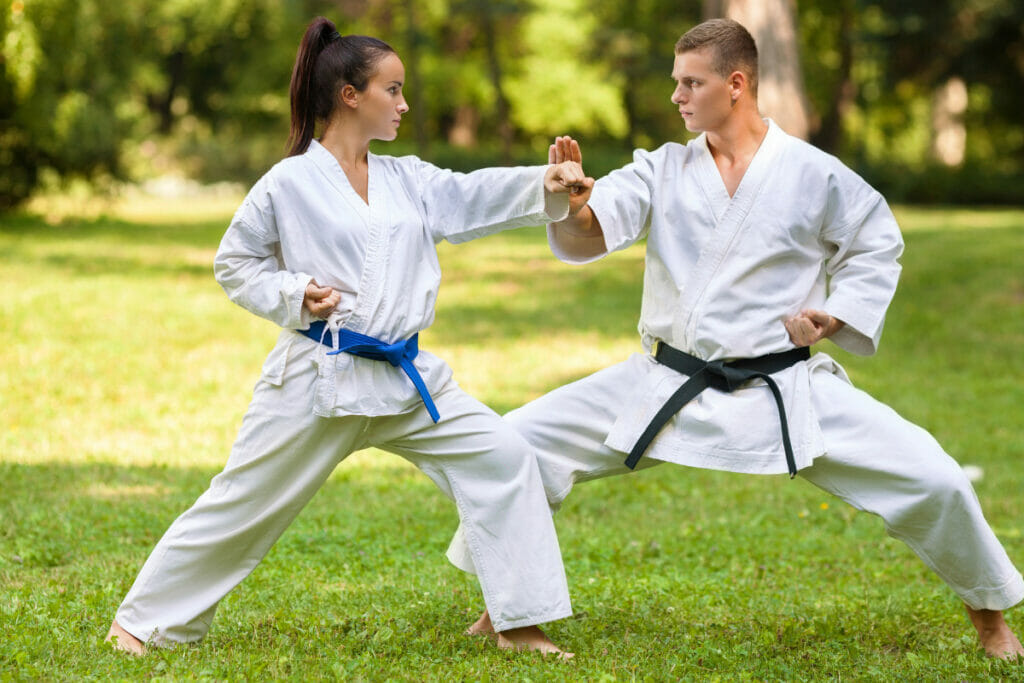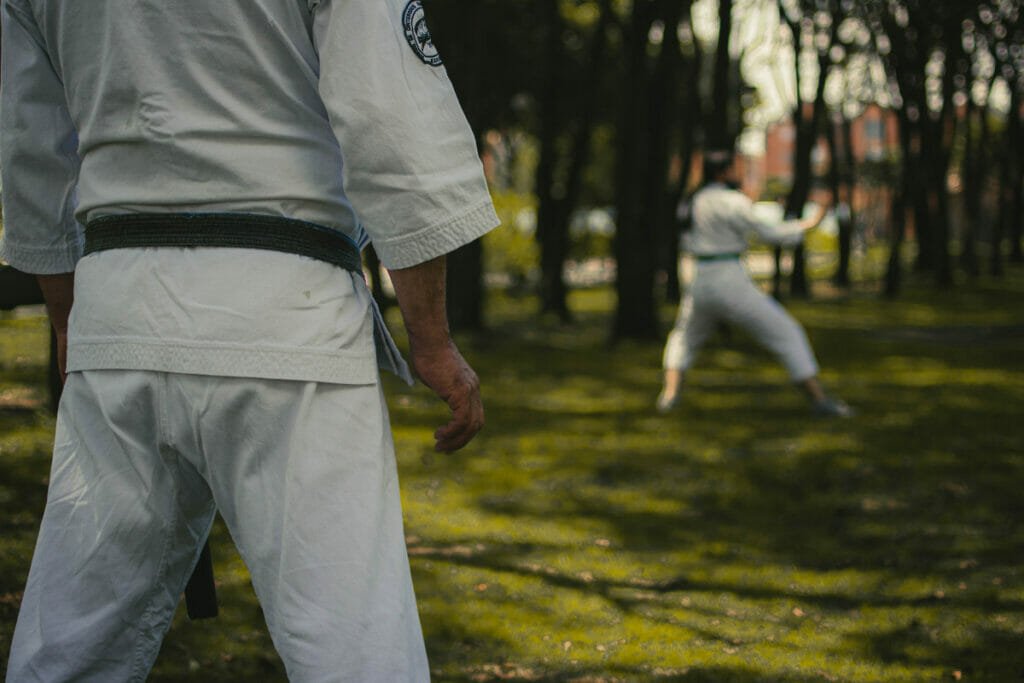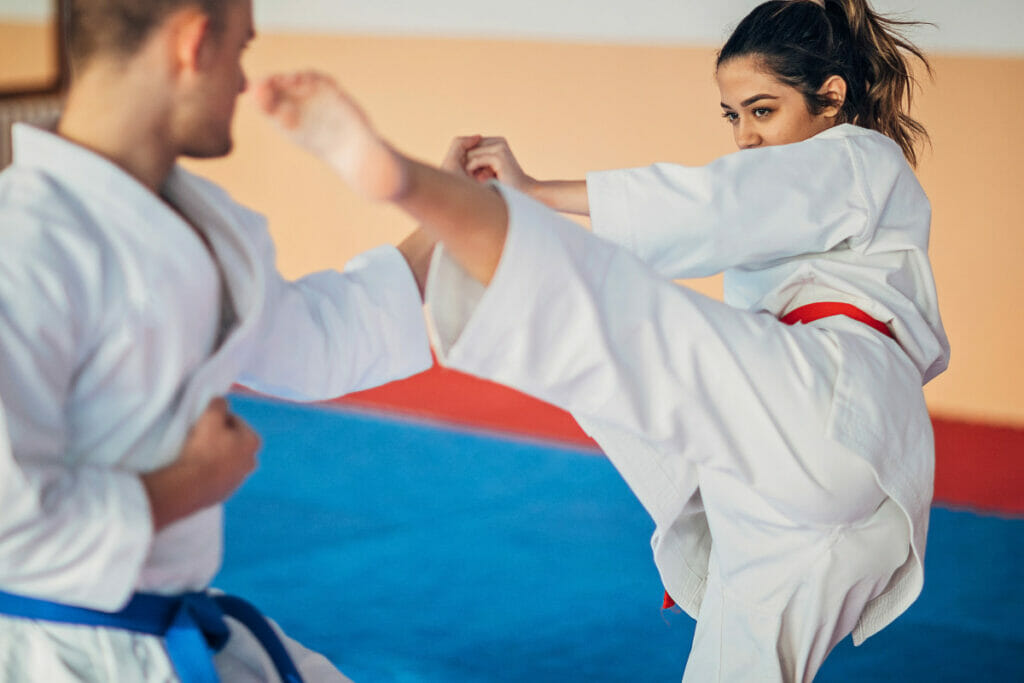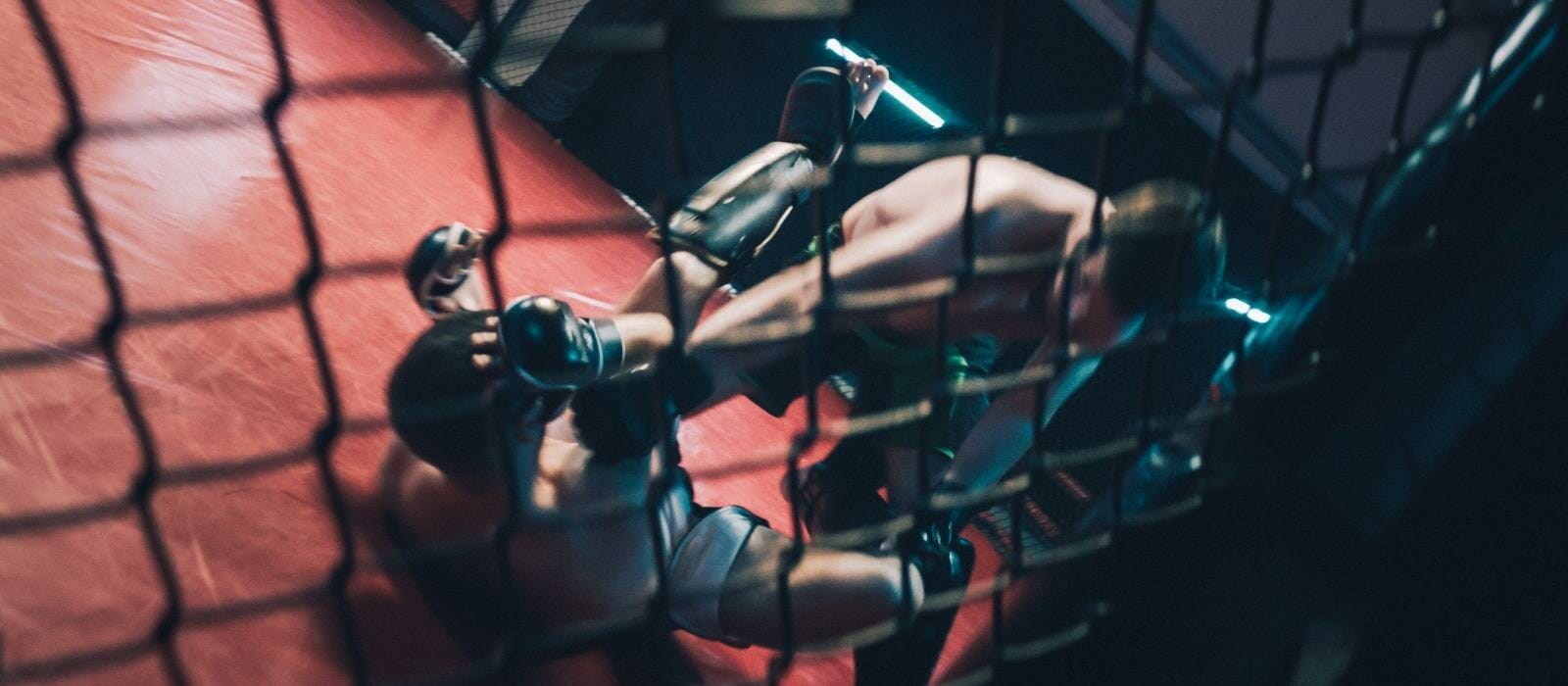Striking techniques are at the heart of karate, and blocks are no exception. However, many people question the effectiveness of blocks, saying that they simply push the attack away instead of stopping it or redirecting it to prevent injury. Is this criticism justified?
Or do blocks have hidden qualities that make them more effective than they appear? This article takes a look at what’s behind blocks and how to use them effectively in karate training and fighting situations.
Are Karate Blocks Effective In a Real Fight?
Do karate blocks work in real life? Yes, they do. But that doesn’t mean you should be using them for every possible attack scenario.
A blocking technique should be used in a real self-defense situation when you are expecting an attack and have time to react. It should be done as a conscious, deliberate action. Blocking techniques may also allow you to gain distance from your attacker by kicking off or pushing away from them in an effort to escape. This can be especially effective if both of your hands are needed for defense and there is no free hand for doing something like firing a gun or throwing a punch.
In some situations, you might use blocks as a way to position yourself for counterattacking, rather than simply retreating. Keep in mind that because physical attacks usually follow predictable patterns and trajectories, blocks work best when they travel along straight lines parallel with those of your opponent’s incoming strike-and ideally, at an angle that will end up taking them out of range entirely after they’ve been deflected.
The more dramatic and acrobatic moves seen in movies don’t tend to work out very well in actual combat situations; after all, the man who practices nothing will fall for anything. In addition: If one person could block any attack perfectly every time, there would be no need for fighting schools at all!

Different Types of Blocking in Karate
When you block in karate, there are different types of blocks you can use to defend yourself against an attack. Each of these blocks has different advantages and disadvantages that should be considered before you commit to using one or the other. They include inward, outward, upward, and lower blocks. Choose the type of block that best fits your oncoming attack so you can get the best possible defense in a given situation.
Inward Block
The inward block is a karate block used to stop a blow to your body or face. This technique can be performed when an opponent attacks with a left punch, right punch, or roundhouse kick. In its simplest form, all you need to do is swing your right arm swiftly to the right from your guard position to wave the attack in the opposite direction so you can use your counterattack.
Outward Block
The outward block is a simple blocking motion that’s designed to prevent an opponent from landing a punch or kick on you. To use this block technique swing your left arm swiftly to the left from your guard position to wave the attack in the opposite direction so you can use your counterattack.
Upward Block
When executed properly, an upward block is performed with a quick, powerful upward strike with your lead arm and pushes away any incoming punches to protect your head.
Lower Block
The lower block is used to protect yourself from body strikes. From your guard stance, use your right or left arm to hammer punches or kicks down to the left or right depending on which direction will be most advantageous to deflect the attack.

What is the Purpose of Blocking in Karate?
Here’s what you need to know: Blocking techniques are meant to be used when your opponent is outside of punching range. They can be used to keep an opponent at bay or stop an attack as it begins.
Generally speaking, beginners shouldn’t even worry about blocking until after they’ve mastered their guard stance. And advanced students should only use blocks when their guard stance is fully set. Because really, the most effective blocks come from a fully set guard stance.
You want to take advantage of whatever opportunity presented itself during the approach. And chances are that opportunity would be presenting itself either on his first step or within his body posture once he starts extending for the punch.
That said, some blocks can be used in different ways; kicks and punches can both be stopped with proper timing and execution. Just make sure that if you’re going to use a block there is room for your follow-up attack.
What makes blocks so effective?
The timing, of course! And let’s be clear here: There is no magic block that will protect you 100% of the time. That said, skilled martial artists have been using blocks in combat situations successfully for thousands of years.
So while they aren’t magical they do work consistently when executed properly. That’s why karate blocks are still an important part of any karate training regimen today.


When Should You Use a Blocking Technique?
Most people learn blocking techniques because they’re worried about getting attacked and defending themselves, but if you’re out on a date or just hanging out with friends at a local festival, is it really worth your time to walk around in your guard stance for an hour?
Most self-defense experts agree that blocking should be limited to times when physical force is used. In other words, only use them when there’s real danger involved.
If someone pushes you lightly, don’t respond by lunging into a blocking technique. This will look aggressive and completely unnecessary and could escalate things quickly.
If someone tries to punch you or throws something at you, then yes: by all means break out those blocks! If someone shoots at you, then it’s time to run!
Conclusion
Blocking is a valuable skill that has its place in many styles of karate. In some styles, it’s so important that it’s taught as a separate activity for beginners and then reintroduced later when students are more adept at performing moves with proper control. You shouldn’t solely rely on blocks alone to protect you from real attackers; there are many ways to practice self-defense and there may be other solutions better suited to your specific circumstances.
While karate is excellent at teaching fighting skills, you will also want to learn how to defend yourself in specific scenarios. For instance, a punch from an attacker wielding something heavy like brass knuckles can easily knock someone down even if they’ve spent years training in martial arts.




